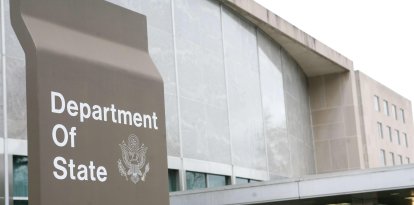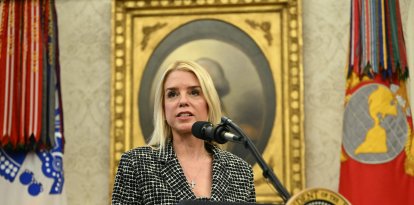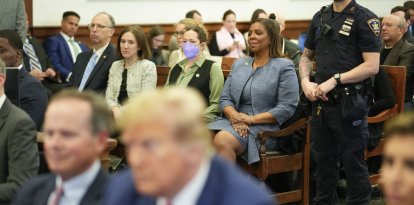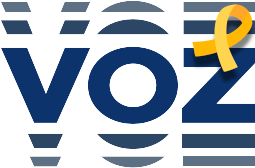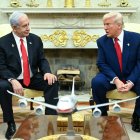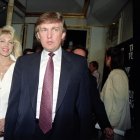Analysis
Is Trump really the anti-Reagan? They're closer than many think
Many conservatives attacked Trump for his reciprocal tariff policy, even contrasting him with the conservative icon figure. However, as an article from the 1980s suggests, his trade approach was not so different.

Ronald Reagan's painting in Ovál Hall/ Saul Loeb.
Ever since Donald Trump showed up at the White House with the now-infamous reciprocal tariffs, criticism has been pouring in. From Democrats, progressives, and even traditional Republicans, many charged against the president for initiating a "trade war." Within the conservative group, not a few have used the figure of Ronald Reagan to contrast with Trump's.
Reagan, who occupied the Oval Office from 1981 to 1989, was the owner of a caramelized rhetoric in favor of free markets. Many used his words to damage the current president even more strongly, in a way rescuing what today would be criticism from one of the most consistent conservative presidents in history.
One of the Gipper's radio speeches recently went viral, in which he fiercely criticized tariff practices, noting that they ultimately end up being detrimental to the country itself.
"You see, at first, when someone says, let's impose tariffs on foreign imports, it looks like they're doing a patriotic thing by protecting American products and jobs, and sometimes for a short while it works, but only for a short time. What eventually occurs is, first, homegrown industries start relying on government protection in the form of high tariffs. They stop competing and stop making the innovative management and technological changes they need to succeed in world markets," he said in 1987.
Likewise, however, the president's defenders went to the archives and found plenty of criticism of Reagan from ideological free-market purists.
In his book 'No Trade Is Free: Changing Course, Taking on China, and Helping America's Workers,' Robert Lighthizer recalled a paper published by the Cato Institute, considered the most important free trade think tank in the United States, in which they accused Reagan of supporting free markets in rhetoric and protectionism in practice. Its author, Sheldon L. Richman, dubbed it 'The Reagan Record on Trade: Rhetoric vs. Reality.'
While he did not agree with everything outlined by the article's author, he noted that "the mere fact that Cato accused President Reagan of protectionism belies the myth that he was a simpleminded free trader who never interfered with imports."
In this context, we review the trade record of Reagan, who, like Trump, understood tariffs not as something desired or ideal but as a consequence of an "unfair" trade policy toward the United States.
The Reagan Administration's trade policy
Reagan was a firm believer in free markets. Some of his greatest ideological references were Richard Cobden, John Bright, and the Frenchman Frederic Bastiat, who wrote 'The Candlemakers’ Petition,' a famous satire against protectionism.
He accompanied this in his speeches during his two terms in office. For example, he expressed the following in 1986 to summarize his trade rationale: "Our trade policy rests firmly on the foundation of free and open markets. I recognize the inescapable conclusion that all of history has taught: The freer the flow of world trade, the stronger the tides of human progress and peace among nations."
Indeed, he proved it by vetoing many protectionist bills that came to his desk from Congress, laying the groundwork for the North American Free Trade Agreement (NAFTA), eliminating Carter-era import quotas, and signing the U.S.-Israel Free Trade Agreement (FAC), among other things.
However, without needing to overshadow the above, and like many of his predecessors, President Reagan also took measures to protect certain industries, which does not make him a protectionist but a pragmatist.
Free trade or fair trade?
Already as a candidate, in 1980, he criticized Japan for its defensive trade policy, especially in the auto industry. "Japan is part of the problem. This is where government can be legitimately involved. That is, to convince the Japanese in one way or another that, in their own interests, that deluge of cars must be slowed while our industry gets back on its feet. (...) If Japan keeps on doing everything that it's doing, it's protectionism."
In addition to persuading Japan to adopt "voluntary" import restrictions on automobiles until 1985, in 1987 he imposed a 100% tariff on certain Japanese electronics. The president himself defended these tariffs before Congress, arguing that it was to "enforce the principles of free and fair trade."
In the same vein, then Commerce Secretary Malcolm Baldrige Jr. said, "We had no choice but to retaliate against Japanese semiconductor products, because Japan refused to open its market and continued to dump semiconductor chips in third-country markets. Retaliation was not the result we wanted. But neither can we tolerate flagrant violations of international agreements and a continuing refusal to open markets."
Reagan also reached agreements with several European and Latin American countries to adopt similar "voluntary" quotas for steel exports to the United States and imposed import restrictions on textiles, specialty steels, Canadian wood products, Italian pasta, and motorcycles.
In addition, the aforementioned Cato Institute article, written by Richman, listed other protectionist measures taken during the Reagan Administration: increased tariffs on Canadian shingles and cedar lumber, tightened quotas on imported sugar, required Taiwan, West Germany, Japan, and Switzerland to restrict their exports of machine tools, and "excessive" use of Section 201 of the Trade Act of 1974, which gives the president power to impose trade barriers.
These measures earned him criticism even from Milton Friedman, who at the time spoke of an "escalation of protectionist rhetoric" during the Reagan Administration, adding that, in certain respects, they were "making Smoot-Hawley appear positively benign."
A model for Trump? The results of Reagan's tariffs
President Trump announced the tariffs and his openness to negotiate, opening the door to a path of lower tariffs globally. Indeed, Treasury Secretary Scott Bessent specified that "almost 70 countries have now approached us wanting to help rebalance global trade."
Although the outcome of this tariff story is still a long way off, something similar happened with the Reagan Administration's tariffs, which turned out to be part of a strategy.
At the time, they reported that Japan agreed to suspend its 28% tariff on cigarette imports and open up to the purchase of U.S. semiconductors; Taiwan agreed to open its market to beer, wine, and cigarettes after the president threatened retaliation; the European Community agreed to ease access for U.S. citrus producers; Japan eliminated tariffs on 137 leather goods and reduced tariffs on aluminum products; and South Korea lowered its barriers to U.S. films and television programs.
"This liberalization may well be attributable to the administration's threats of protectionism. It is possible for the United States to "persuade" other countries to open markets by threatening to close ours," Richman analyzed in his article.
Like Reagan, Trump's Case Study
Emulating the rhetoric of the Reagan presidency, albeit with his traditional direct tone, Trump came to the 2018 G7 with a clear proposal for all the leaders present: "No tariffs, no barriers — scrapping all of it. That's the way it should be. And no subsidies."
Those words resulted in the famous photo in which Angela Merkel looks at him with undisguised frustration while he sits with his arms crossed and sketching a faint smile. On that occasion, similar to President Reagan with Japan, Trump collided with a world already playing by protectionist rules and without much encouragement to change course.
Since his return to Washington and without a re-election to worry about, Trump decided to turn world trade upside down with reciprocal tariffs. Frustrated because he could not solve with words what he understands as a trade issue, he decided to put his cards on the table. Given that the president has an interesting array of advisors, with tariff fanatics and free traders, which adds to his transactional nature, we will have to wait for the next chapters of this novel.
Perhaps the most graphic representation of this tug-of-war is the media crossover between Peter Navarro and Elon Musk, who represent both ends on the White House trade spectrum.
RECOMMENDATION



